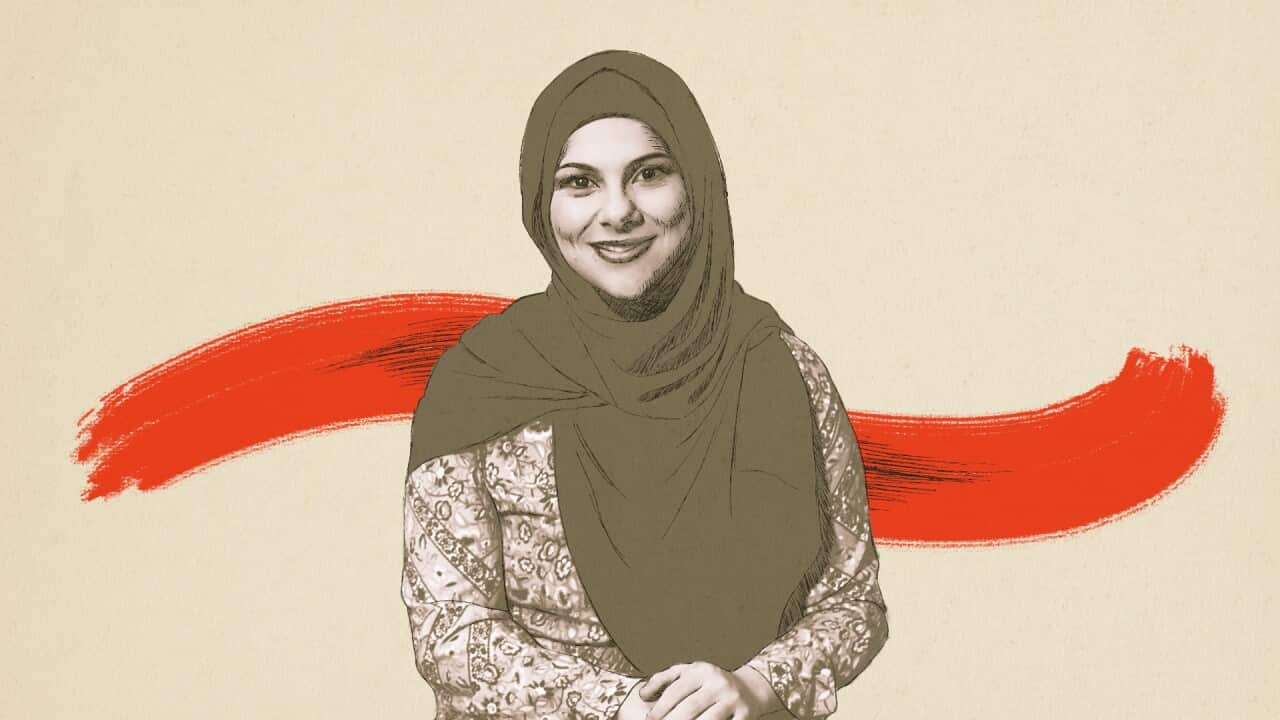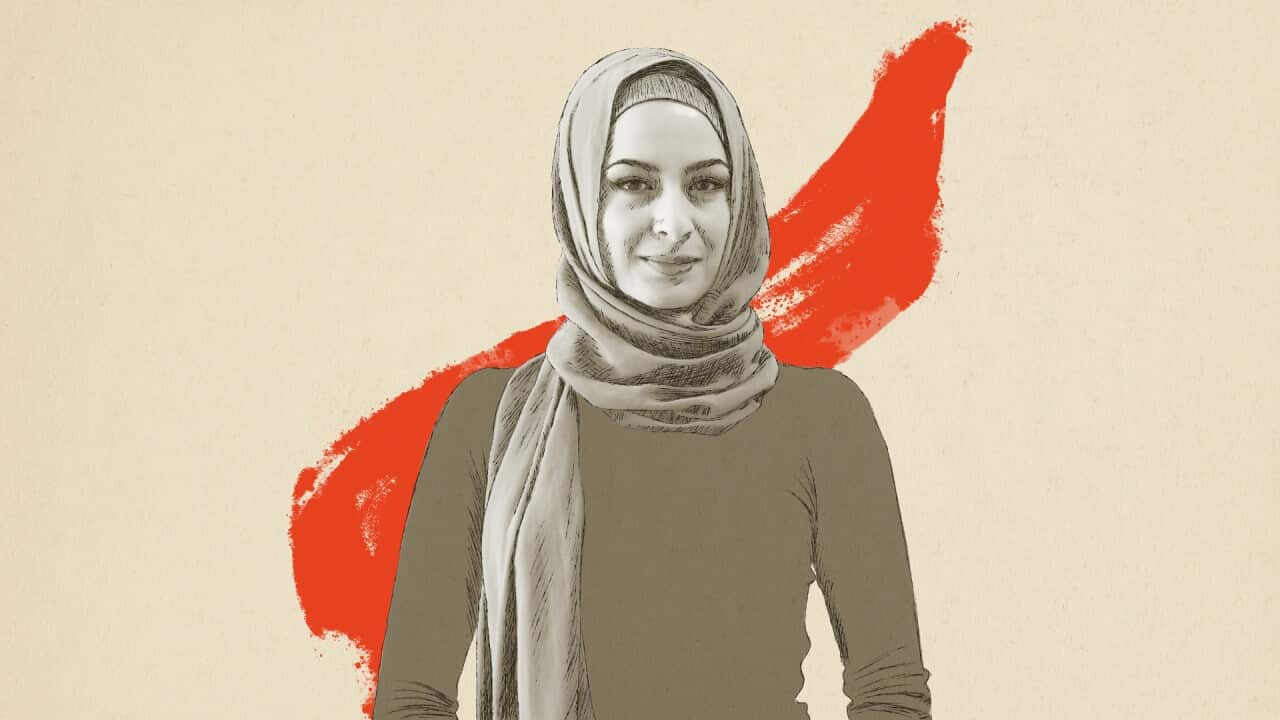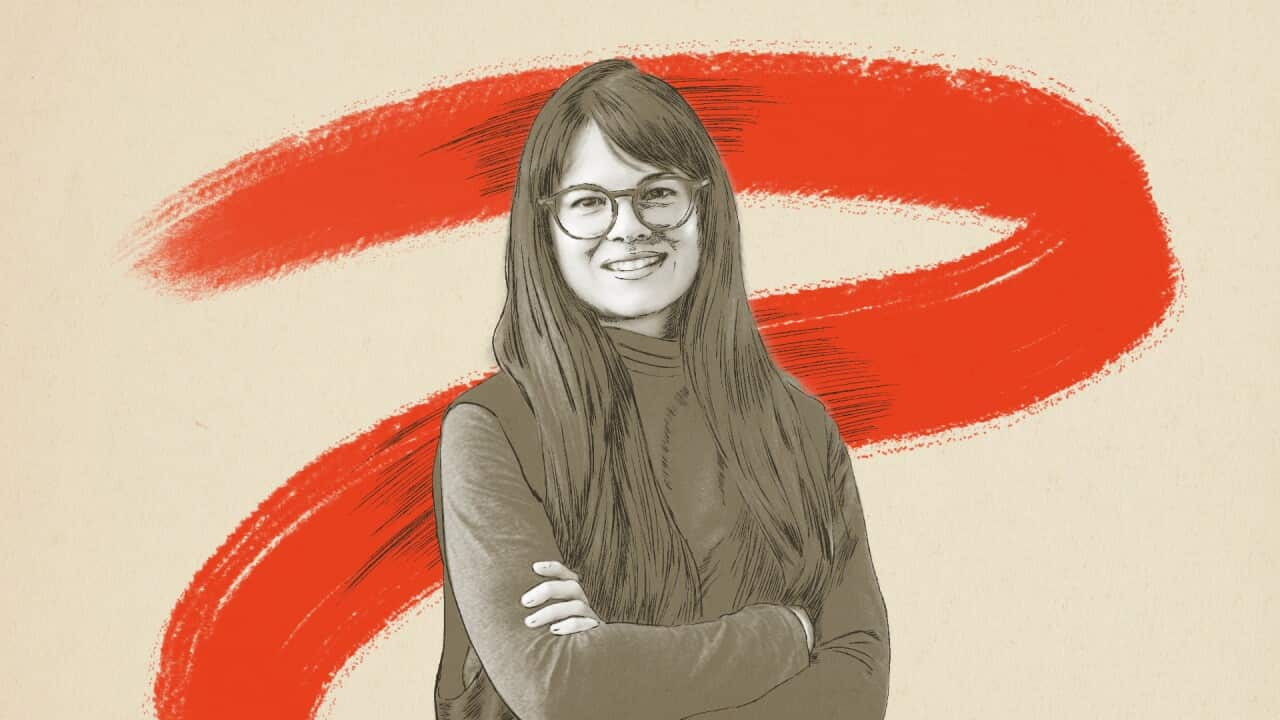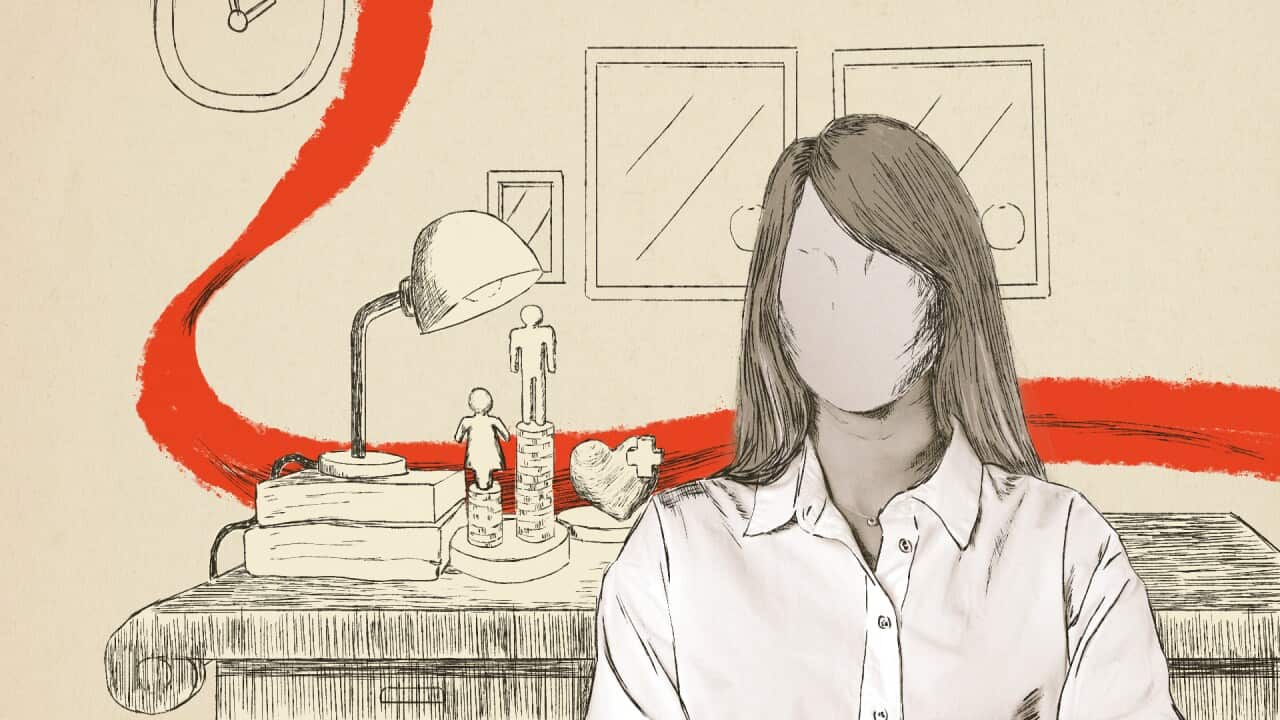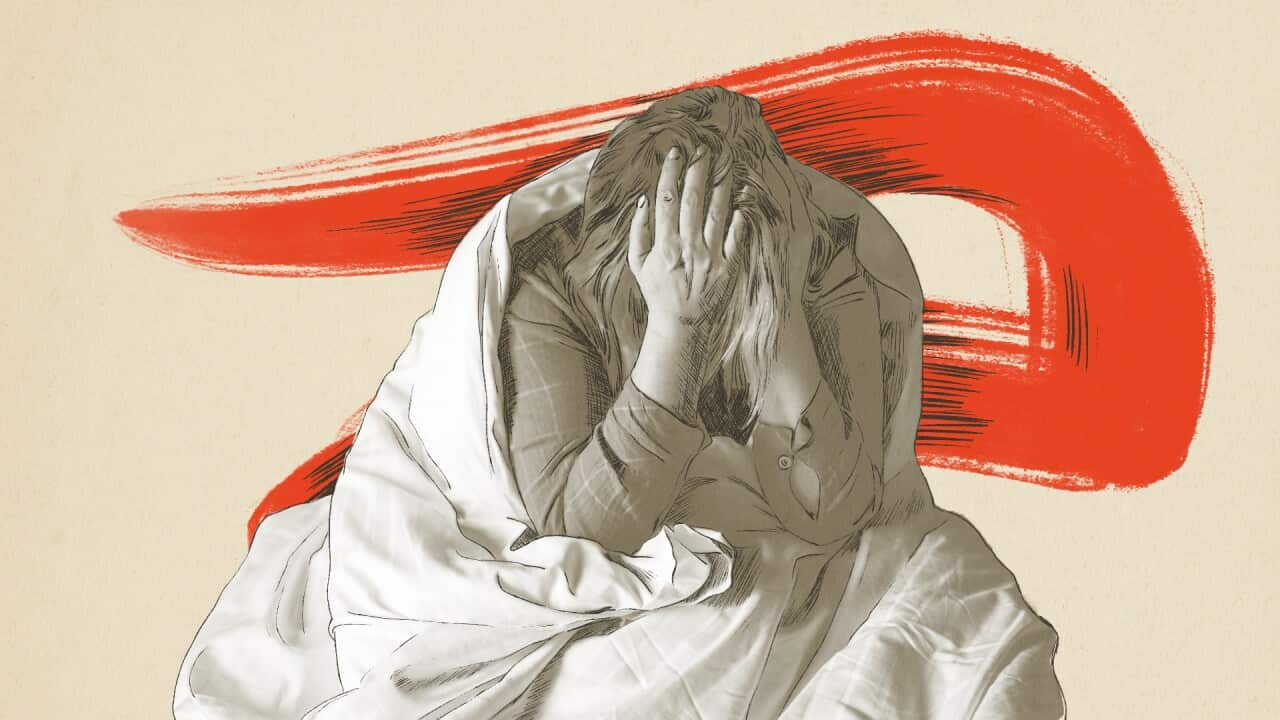TRANSCRIPT
“That's it. I'm going to the doctor because this is not normal. The pain's not normal, it's excruciating, it's debilitating. But I felt like I wasn't heard.”
“All my life, I've been getting these messages from society and the media. You need to be thinner, you need to be browner, exercise like this, dress like this, blah, blah, blah. And here it was again.”
Not only is there a lack of research into how women's bodies are affected by different health conditions or respond to treatment... there's also a huge gap in research around health issues that affect women, trans and gender diverse people.
Endometriosis affects nearly one million Australians, and yet there is still no cure for the condition and the average diagnosis in Australia is between 7 and 12 years.
And when it comes to other health areas like menopause there is still a lot we don't know.
So why is this the case? And what are Australians calling for to address this issue?
I'm your host, Catriona Stirrat, and in this episode of 'Hysterical' we investigate these gaps in research and knowledge... and the dangers of delayed diagnosis and treatment that often follow.
Hoda Hanaway is a media personality, cook and social worker... and is an Ambassador for Endometriosis Australia.
She was a Masterchef contestant in 2018.
But despite her many successes, Hoda has suffered intense pain from the age of 11.
“I got my periods from, I was about 11 and a half years old, so I mean maybe by the third period that I had from there, that's when pain started and it was back then, we're talking more than 20 years ago. Back then, nobody would've thought, oh, go to the doctor. There's something like, it's not normal to have pain. It was normalized back then, but the pain was so bad that I'd have to take a couple of days of school. The heavy bleeding also was accompanied it and everything, and so for many years I just suffered with the pain.”
It was a whole seven years later when Hoda sought help.
“I think it got to a point when I was about 18 years old and then I said to mom, that's it. I'm going to the doctor because this is not normal. The pain's not normal, it's excruciating, it's debilitating, and I remember that just being in a fetal position, rocking backwards and forwards, ripping up tissue, just like something, but nothing would take that pain away.”
She felt dismissed in her initial interactions with health professionals.
“So I went to the GP and I had a referral to a gynaecologist, but I felt like I wasn't heard. My GP just cut me off and automatically went, oh, it could be your thyroid or something, so go see a gynaecologist. I was like, okay. So I went and saw that first gynaecologist and she was not interested in the history. She was, yep. She just was interested in moving people in and out and wrote a referral to get my thyroid checked and everything. Now, whilst it's reasonable to say, get your thyroid checked, it didn't sit right with me, especially because I'm like, if you haven't even heard what's going on with me and you are assuming this, now you're going to give me the runaround.”
Unfortunately, Hoda's story is like many women's experiences with endometriosis.
Endometriosis affects nearly 1 million people in Australia, and is a condition where tissue, similar to the lining in the womb, grows outside it in other parts of the body.
Common symptoms include intense pelvic pain, with endometriosis mostly affecting the reproductive organs.
But it can also be found around the bowel and bladder, and has in fact been found in every part of the body including the skin, joints, lungs and brain.
Kate Seear is a Professor at La Trobe University's Australian Research Centre in Sex Health and Society.
She's written extensively on endometriosis and its relationship to stigmas around women's bodies.
“Historically menstruation has been a taboo subject. It's something that young women and girls or people with uterus haven't been encouraged to speak about very openly. And so there's also a lot of shame associated with menstruation and speaking about menstrual problems, I think the nature of a condition that's dominated by pain like endometriosis also makes it a bit difficult to know whether your experience of pain, if you are having pain symptoms is sort of in inverted normal or not. None of us can really gauge that instinctively.”
But it's not just societal taboos - the problem infiltrates medicine and which health issues receive attention and research.
“Traditionally, when people go through medical school, they don't get a lot of education about menstruation or endometriosis in particular. And actually menstrual problems and pain and endometriosis are conditions that have been surrounded by a lot of misinformation and myths and problematic stereotypes and thinking for a very long period of time. So if you look back at medical textbooks, for example, right across even back into the 18 hundreds when endometriosis was first identified as a condition, you'll see that women's menstrual pain, women's complaints of pain are dismissed or described even in gynecological texts as essentially not a real problem. Women who experience pain are often described as sensitive or hypersensitive, oversensitive weak and their complaints of pain are trivialized and dismissed. And this of course then has followed through to medical practice.”
Hoda eventually received a diagnosis of stage four endometriosis after visiting a different gynaecologist.
She's undergone around 15 surgeries, receiving a laparoscopy every single year to remove endometriosis following her first procedure.
Her most recent operation was a hysterectomy - which Hoda says was her last resort.
“A hysterectomy is the final worst case treatment. It's not a cure. And they're finding now, and the statistics are coming out more that I think it's 45% of women who have had a hysterectomy find that within five years the endometriosis returns. So it's not a cure, it's a last resort treatment. On practicality, yes, I'm done. I'm getting older, I'm not getting younger, and I can't have this pain debilitate me, especially when during that time I divorced and being, for a period of time, a single parent, I had to be functional. Now, I've got a medical team around me. I've got the pain again, and I'm currently experiencing right now talking to you a really bad flare up.”
round 50 per cent of women surveyed in Victoria reported that sexual and reproductive health conditions, like endometriosis, and other menstrual-related conditions affected their health and wellbeing.
Kat Stanley is the director of EndoHelp Foundation, and also a member of the Women's Health Advisory Council.
She says women presenting with endometriosis are simply not heard in the health system.
“Endometriosis is a 6 and a half year diagnosis delay. You can imagine how many doctor visits that would be, not only are they not heard, but they also feel very disempowered in the health system. They talk about going in and having invasive tests and not really feeling like they have power or autonomy over what's happening in there. There's a language issue because we have so much stigma. We're currently changing that you and I having this conversation, but there's a lot of stigma around menstruation and women's reproduction, and that means lots of people don't even have the language to describe what's going on in their own bodies. And when you already have the trauma history of going to get the help and not being believed, it's even harder to discuss those personal things that are going on for you.”
And for culturally and linguistically diverse women - the outcomes are even worse.
Delaram Ansari, policy advisor from the Multicultural Centre for Women's Health explains.
“The limited research available to us tells us that 26% of endometriosis related hospitalisations between 2021 to 2022 were among females who were born outside of Australia. Now given the many barriers, migrant and refugee women and gender diverse people experiencing accessing diagnosis, and they experienced delayed care, we suspect this number to be even higher.”
Unfortunately women continue to report feeling dismissed in later stages of life, including when they approach menopause.
The average age for menopause in Australia has been reported as 51 years, according to a 2023 Jean Hailes Women's Health report, funded by the Australian government as part of their Women's Health Survey.
But what is menopause and how does it differ from perimenopause?
CEO of Jean Hailes, Dr Sarah White, explains.
“So menopause is really just a single date in time. It's the date 12 months after you had your last period. So we talk about menopause as this whole period of time, but really it's just a single date 12 months after your last period. Perimenopause is the time that is the lead up to menopause and about a year afterwards, and that's the period in which those key hormones associated with ovarian function decline. So estrogen goes down, for example. So it's that hormonal changes during perimenopause that cause a lot of the symptoms we talk about as menopausal symptoms.”
Some of these symptoms include:
“Hot flushes and night sweats, they're also called vasomotor symptoms. They're the most common symptoms that women have. Insomnia can be a real problem, and a lot of the time when we talk about mood disturbances and psychological effects at menopause, it's really hard to tease apart whether that's because you're trying to run on little sleep. Joint pain can be something that's associated with menopause. A lot of women don't know about brain fog is the one that really worries a lot of women at Jean Hailes. We have women telling us all the time, I started Googling early dementia because I thought it must've been something terrible. I said, well, no, that's what we call brain fog and it can affect people that disrupt some of the thinking. We also have a group of urogenital disorders, so start to have a lot of dryness in the vagina that can make sex quite painful, thinning tissues in the vulva as well. So there are a few issues down there as well to take note of.”
A Senate inquiry into menopause and perimenopause is hearing from a range of women and advocacy groups around some of the knowledge gaps and systemic failures for people experiencing menopause.
Greens senator and spokesperson on women, Larissa Waters, said those experiencing menopause are reporting dismissal from GPs, and an overall lack of knowledge on the area.
“Women are feeling like they're not heard, or feeling like they don't have a good baseline understanding of what to expect when it comes to perimenopause and menopause. When they do then seek medical help. So often we're hearing that GPs are either dismissive or simply suggest that they go on to antidepressants, and that consideration of hormone treatment is often not even mentioned and that women are having to have multiple appointments before it even gets raised and often it needs to be raised by the woman herself.”
Kathy is a farmer from northern Victoria, and told the Senate Inquiry that she had no proper knowledge on menopause and suffered years of inadequate treatment for the symptoms she was experiencing.
She was dismissed by her local GP when she first transitioned off the contraceptive pill and requested a scan which showed a follicle about to burst.
Kathy went back on the pill for another 12 months but told the inquiry she was repeatedly dismissed by her local GP when she visited him for any related health issues - and eventually moved to a Jean Hailes gynaecologist who put Kathy on a low dose of menopausal hormone therapy, or M-H-T.
“I've started to experience symptoms of menopause, but I did not know that's what they were. All my life, I've struggled through pain and expected it. It's what women do, right? To find myself waking up in the night, two o'clock in the morning with anxiety. I didn't even have a word for that. It was not until a couple of years ago that I learned there was a word for what I was feeling at two o'clock in the morning when I was just filled with existential dread and panicking about what I was going to do the next morning. And this is what menopause brought me. It brought me pain without cause, anxiety without reason, and I'd never come across anything like this.”
Kathy says the issue comes down to a lack of knowledge around menopause - creating ignorance and stigma around the condition.
“All my life, I've been getting these messages from society and the media. You need to be thinner, you need to be browner, exercise like this, dress like this, blah, blah, blah. And here it was again, you wouldn't be suffering these symptoms if you were eating like this, exercising like this. It was the same message. I don't think the GPS intentionally gaslight you, but that's what they do. Because when they don't know and you don't know and they say, well try maybe antidepressants, you think, well, maybe I am depressed. GPs don't know. How can they, there's not enough, there's not enough taught at medical school. There's just not enough of it. However, women don't know enough either. I knew nothing.”
There's no denying menopause symptoms can be unpleasant, but Dr White says there can also be an over-emphasis on negative symptoms, when in fact only 25% of people will report really negative experiences.
She explains how the negative side affects are often exploited for commercial incentives that promise a solution to symptoms.
Jean Hailes' 2023 report on 'the impact of symptoms attributed to menopause by Australian women', offered an example of a shocking statistic in the UK that claimed 'nearly one million' women were quitting their jobs due to menopause, which actually turned out to be due to a number of reasons.
She says catastrophising menopause can be dangerous.
“We see in western cultures, particularly this really negative frame around menopause, and we've got this incredibly interesting public discourse at the moment where we have women talking about menopause really openly, which is great, but we see a lot of commercial entities jumping in and hijacking some of that discussion, which is not good because it's a lot of the time or they're trying to highlight the really negative experiences because they have a product to sell at the other side, of course. About 25% of women have a really tough time with terrible symptoms and they need lots of support and help and attention, but most women either have no symptoms about the same number, have no symptoms, and the rest fall in the middle.”
But there's also a reluctance by people experiencing menopause to visit a doctor in the first place.
According to the menopause survey, for those under 45 reporting symptoms, more than half did not see a doctor, while it was more than a third for those aged 45 and over.
The majority reported they did not think the symptoms were bad enough to visit a doctor, but Dr White says delaying a visit can contribute to an increased risk of chronic conditions.
“By and large women aren't prepared and they don't know the symptoms and they will walk into a GP and get a response that is, oh, well, it could be menopause, kind of not quite deal with it, but that's the sort of tone that they're getting. Or they have to really fight for a discussion of treatment options like menopause hormone therapy and things like that. So by and large, it's not a great experience and that's not always the fault in commas of GPs, sometimes that whole GP model is just not set up to explore, have a long consultation to explore all the issues, and we still have challenges with fears about the safety of menopause hormone therapy, which we know is still the most effective way to help manage some of those symptoms.”
And for women or gender diverse people from culturally and linguistically diverse backgrounds, and refugees or asylum seekers, there is limited evidence on how menopause and perimenopause affects these groups, due to a lack of consistent and publicly accessible national health data.
This was noted in a submission by the Multicultural Centre for Women's Health to the Senate inquiry into menopause, which policy advisory Delaram Ansari and her colleague attended in June.
“Currently, the limited research that is available to us tells us that there may be differences in hormonal changes and biological factors for women from different races and ethnicities. For instance, we know that there are some studies that show menopausal age for women from South Asian backgrounds. It's much lower than Australian Caucasian women. This is particularly concerning because the age of menopause is also associated with increased risk of other conditions like cardiovascular disease, diabetes or insulin resistance. So the current lack of research presents not only challenges for management of menopause, but also for implementation of culturally appropriate and meaningful prevention and early intervention strategies measured that are important for management of conditions that are related to menopause.”
Senator Waters acknowledged there is an even wider knowledge gap for First Nations women and culturally and linguistically diverse people.
“We have almost no research about First Nations women experiencing perimenopause and menopause. Likewise, with culturally and linguistically diverse women. We've got some really good health care programs and healthy My language is one of them. That was started during COVID that ended up being used for much broader health literacy messaging for call communities. And I've had nothing but good feedback about that program. So I hope that the government can continue to fund and expand that program so that we can reach all women where they're at including women from different backgrounds and First Nations women.”
Financial barriers, especially for such vulnerable communities, make seeking help even harder.
As discussed in an earlier episode, Medicare rebates for women's health procedures - such as an IUD insertion for example - are often lower than a similar or simpler operation for a man, such as a vasectomy.
Dr Magdalena Simonis is one of many health practitioners calling for greater funding towards women's health.
“I have patients who've had severe chronic disease that like endometriosis and chronic pain that's been many, many years in the process of being diagnosed and managed. And even in the hands of the most experienced health professionals, they've still fallen through the cracks. And one comment that a patient of mine made who's got excellently health literacy and is actually quite financially able to support her own health, said, how many more women are out there who can't access the services that I can access, who can't afford the care that I can care have? And she said, I have spent the best years of my life just surviving and not living to my maximum. How many more women are out there doing the same thing who have no financial capacity to do what I've been doing?”
Polycystic ovary syndrome, or PCOS, is yet another health area which is under-researched and under-funded.
Helena Teede is a Professor of Women's Health at Monash University, and specialises in the condition.
So what is polycystic ovary syndrome?
“So PCOS is very common; one in eight women or 160 million affected around the world; a condition that's caused because of disturbance in our hormones, which are the chemical messengers that basically connect all the functions in the body. And for women, it has very significant effects that can be quite complicated and therefore hard to diagnose.”
The condition impacts the female reproductive system, which can include irregular periods, reduced ovulation and trouble with fertility.
But it can also increase your risk of weight gain, diabetes, and heart conditions, as well as affect the skin, hair and a person's mental health.
Despite the condition being common among women, Dr Teede says as with many women's health issues a lack of research and education among health professionals has led to an under-diagnosis of PCOS.
“And part of the reason for the under-diagnosis has been concern about whether women should be labeled with a condition. And that partly came because a lot of doctors didn't think it was important because we didn't have any funding for research, and all the funding for research was just about infertility. So over recent years, it's become very clear it has all of these other components. It has a very profound impact on quality of life. It's a chronic condition that needs a very strong focus on diagnosis and prevention and treatment.”
There's even a misunderstanding about the key characteristics of the condition.
“One of the tests that's involved in diagnosis is when they do a scan of the ovaries, they're not cysts, which in of itself is a problem. They're actually half-developed eggs, which develop to a certain point, and then don't ovulate and go on to allow fertility. And because you can see them on an ultrasound as little fluid sacks they're seen or described as cysts. But they're not real cysts, they don't get very big, they don't burst, they don't need surgery. So one of the really important things for a woman to know is just because you have those changes on an ultrasound doesn't mean you have the condition.”
Dr Teede has played a major part in leading the development of international guidelines for P-C-O-S to make diagnosis more accurate and accessible.
Following extensive research in the area, Dr Teede led the development of guidelines for doctors in Australia, which included significant input from women's experiences, before expanding this globally to create the first international guidelines in 2018.
These guidelines were updated in 2023, and now a free AskPCOS app is used in nearly 200 countries to ensure women are informed about the condition.
“But excitingly, I think that the real important thing is we're getting change in practice. We're getting undergraduate education now contains a lot more about this condition. And that's not just doctors. That's actually midwives now and dietitians and psychologists who all need to know about the condition a lot more in the postgraduate. So by the end of this year, we will have presented face-to-face on the guidelines to half the GPS in the country.”
But delayed diagnosis doesn't just affect women.
Yet again, trans and gender diverse peoples are often excluded from these concerns - not simply in how these conditions are labelled as 'women's health issues'.
Dr Joe Latham says delayed diagnosis for trans people is often a result of a reluctance to visit healthcare professionals following experiences of being discriminated against or treated poorly.
“So the diagnosis and psychiatric assessment works for trans people that it puts trans patients and doctors into this adversarial kind of relationship where trans people are trying to prove to this psychiatrist or mental health provider that they really are trans in order to get the diagnosis in order to access men or surgery. And that being put in that position, it sort of has longer term effects for trans people that it has the effect of creating this kind of not very caring relationship between doctors and patients. And that itself I think has a lot of longer term effects for how likely is that trans people go to see doctors, how quickly, how often, and how often that we won't we'll just be like, oh, well, I'll just leave it because it's just too difficult to face that kind of interrogation.”
You might recall Ash from the previous episode, sharing her story of being misgendered repeatedly in a GP appointment.
Ash was also diagnosed with Dissasociative Identity Disorder when they were 18 years old, but since struggled to get a diagnosis for gender dysphoria.
The delay in this diagnosis meant Ash had to wait 8 months before she could access vital hormone replacement therapy.
“Then you've got the psychologists and psychiatrists. I was told by the gender clinic that the only one in Tassie is in Hobart, and they charge about $500 after the Medicare rebate per visit. Plus they have a waiting list a mile long. That's the only one qualified to do gender dysphoria diagnosis. The psychologist I use now, she's wonderful. She'd never dealt with DID before. She'd never dealt with trans, she'd never dealt with dysphoria, but I gave her a couple of links and she's caught up. It's hard getting doctors that know anything. If you want to get the best out of it, you've got to know. Not everyone's capable of that.”
As a trans woman, Ash says this delay in diagnosis stalled her transition.
Not only did she have to wait months before accessing HRT, but she is also required to be on that treatment for a year before being able to access surgery.
“Very frustrated by the whole process. It puts a stop in any progress that you can make. You only do so much social transition and without the HRT, this takes forever. It just took forever to do. A lot of the governments see it as an optional thing, but it's not an optional, it's a necessity for most people who are transgender.”
Dr Latham says these kinds of challenges can contribute to a dangerous reluctance by trans people to seek healthcare at all.
“So that can really lead to people making constant decisions about what to reveal to whom. And seeing different health professionals for different healthcare needs, and that can lead to a fragmented form of care of people not getting holistic care, not being able, not feeling safe enough to disclose all of the issues that they might be having to one professional. And we know from research that the longer a timeframe between having a health concern and seeking treatment for it has worse health outcomes. And so this kind of hesitancy and reluctance that is formed in that sort of medical process of transitioning can really lead to people not seeking preventative healthcare and just taking longer to see a doctor or not seeing one at all.”
Delayed diagnoses is also over-represented among migrant and refugee women and gender diverse peoples.
The Multicultural Centre for Women's Health has interacted with culturally and linguistically diverse communities for 46 years and provided a submission to the Victorian Women's Pain Inquiry, looking to fill key gaps in knowledge around these groups, as Ms Ansari shares.
“So some of them are related to sexual reproductive health, some are related to mental health, chronic conditions or even pain associated with the type of work. But the conditions of work that migrant and refugee people have been exposed to for long period of time, more specifically in relation to sexual reproductive health, reproductive, we have heard from women who have waited years to be diagnosed and one person really mentioned to us that they have waited over 17 years to be diagnosed with polycystic ovary syndrome. It creates more complex health issues for them, but it also causes disruption to their work, careers, their studies or their social life and relationships.”
Ongoing taboos around women's bodies and menstruation don't help either - something Hoda can relate to.
“Women's health, especially back and being of Lebanese background, it's taboo to speak about it. It was from a cultural perspective. I remember mum, God love her. She is, like, was too embarrassed to even say that I had surgery to remove some endometriosis. And then I remember a conversation with her, and she might kill me for this, but I was like, you can't keep telling people every year that I've taken out my appendix over and over again.”
She's clearly able to laugh about some of this now, and acknowledges that her mother was supportive.
But it was still isolating to carry this secret.
It's why Hoda became an Ambassador for endometriosis - wanting to remove shame and advocate for conversations around the condition.
“In my culture and religiously as well, there is a lot of shame attached to it. And I'm just trying to speak openly enough so that people can realize, okay, well actually there's nothing wrong with, you're not going to sit there advertising it, but there's nothing wrong with trying to get even a bit of emotional support around when you are at your worst. But I'm not going to lie, yeah, it did make it a bit hard throughout that time because I couldn't talk about it openly. So I had to deal with it myself and just have my immediate family. But also I know my sisters also suffered from pain and I think they might've had it. But yeah, it was just that I decided to break off from tradition, go and get it checked out and not settle for the first doctor's answer because I wasn't satisfied.”
In our next episode of 'Hysterical' we investigate a prevailing bias in medicine... is the male body still treated as the default in research around health conditions and treatment?
And what consequences does this have for women and trans people?
